Shift scheduling can be a messy business. It’s not just about finding the right number of people to fill the shifts you need – it also involves determining which staff members have the appropriate skills and experience to make sure every day is successful.
Add in time off requests, overtime regulations, and unpredictable fluctuations in demand… It’s no wonder that so many managers struggle with shift scheduling!
But don’t worry – we’ve got your back! Here are our top 10 most common shift scheduling challenges and effective solutions that will help you tackle them step by step.

1. Lack of planning
The lack of planning equals the lack of clarity and transparency in the scheduling process. When schedules are created on the fly, without any forethought or consideration for the needs of employees and the business, it’s easy to make mistakes.
Scheduling conflicts, understaffing, and overstaffing can all occur, leading to a less productive and less satisfied workforce.
Furthermore, the lack of planning can have financial implications for businesses. If employees are not properly scheduled and utilized, you are bound to waste time and resources. This can be especially detrimental in industries like healthcare, where understaffing can result in compromised patient care and costly legal ramifications.
Solution:
Step 1: Determine your business needs
Before you can even think about scheduling shifts, figure out what your business requires:
- What level of performance output do you strive to achieve?
- How many employees per shift do you need to maintain high-quality service?
- Do you seek to maximize staff productivity, reduce business costs and overtime hours, improve employee satisfaction, etc.?
- What are the most critical shifts that need to be covered?
- Are there certain days or times that are busier than others?
Take the time to analyze your staffing needs in line with your overall objectives so you can create a schedule that meets them.
Step 2: Identify your staff’s availability
Once you have a handle on what your business needs, it’s time to find out what your staff can offer.
Compile a list of each employee’s availability, taking into account their personal preferences and other commitments outside of work. Find out if any employees are willing to take on additional shifts or can be called in at short notice – this will help you determine who can work when you need them to.
Step 3: Create shift schedules in advance
With your business needs and employee availability in hand, it’s time to start creating a shift schedule:
- Outline the days and times that need coverage
- Plug in employees who are available during those times
- Take daily breaks, overtime, and other scheduling regulations into account to minimize legal risks
Step 4: Monitor and adjust as needed
Even the best-planned schedule may need adjustments from time to time. Thus, it’s essential to monitor employee performance and attendance to confirm that the schedule is working as intended.
However, if you notice any deviation from the plan, you need to address it promptly and make any necessary adjustments to avoid understaffing and productivity loss.
2. Poor organization
Picture this: you’re standing in line at a local bakery, eagerly awaiting a fresh, delicious croissant. You notice that behind the counter, the staff moves with impressive efficiency, each member seamlessly stepping in to complete the next step in the process of fulfilling your order.
That’s an example of an effective process organization.
Essentially, good process organization involves breaking down a larger task or project into smaller, more manageable steps, with each team member taking responsibility for a specific component. When it comes to shift scheduling, such a system not only fosters a more efficient and seamless flow but also allows for easier progress tracking and communication.
On the other hand, the lack of organization turns shift scheduling into a headache-inducing experience and results in a massive number of problems, both big and small. When you don’t have a set of rules to guide your scheduling process, you risk occasionally missing out on some important factors and failing to meet your staffing needs consistently.
Solution:
Step 1: Establish guidelines
Clear guidelines make the scheduling process more consistent, accurate, and fair. These guidelines should cover such factors as:
- How far in advance schedules must be posted
- Shift length and break time
- Hours between shifts
- Communication rules regarding shift scheduling and approval
- How to handle employee shift and leave requests, etc.
Having such clear scheduling parameters is the #1 way to optimize the process, making it more efficient and less time-consuming for managers and supervisors.
Plus, well-developed guidelines help to avoid legal issues down the line. By ensuring that schedules meet all relevant laws and regulations, companies can avoid costly lawsuits and fines, thereby protecting their bottom line.
Step 2: Use a visual scheduling tool
A world without visual aids is a bleak and boring place. But besides making things more exciting and appealing, they also help keep everything organized.
With a visual shift scheduling tool, you can easily spot and prioritize tasks with just a glance. No need to wade through an endless to-do list or decipher confusing spreadsheets – a proper visual scheduling tool will allow you and your team members to clearly see when they’re supposed to work, making it a breeze to plan your work time and resources effectively.
Step 3: Regularly evaluate and adapt
Evaluation is key to improvement in any area of performance. Thus, ask the following questions to understand whether your scheduling process is on point or requires corrections:
- How effective and efficient was the schedule?
- Were you able to hit your targets (e.g., high-quality customer service, desired output volume, etc.)?
- Were your employees pleased with their shifts?
- How fast and effectively were unplanned absences handled?
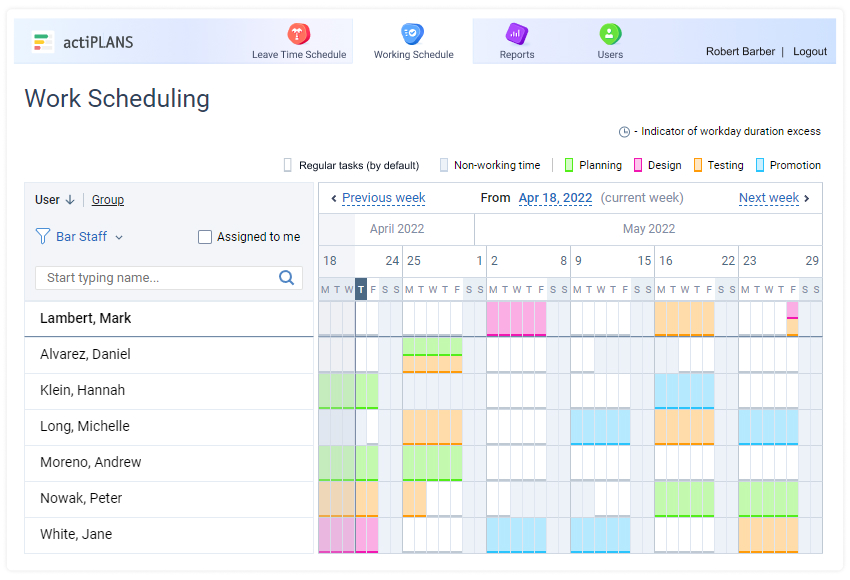
Enjoy a flexible and visual shift scheduling process with actiPLANS
3. Last-minute schedule changes
Last-minute schedule changes are the bane of every manager’s existence. First and foremost, they are prone to wreak havoc on employee morale.
Let’s say an employee who was looking forward to a well-deserved day off suddenly gets called into work due to a schedule change. They may not only get disgruntled but also be less productive due to their unhappy state of mind. This then can lead to a domino effect on the rest of the team and ultimately impact the quality of work.
Secondly, last-minute changes also increase the risk of understaffing or overstaffing, which is especially true in industries with unpredictable demand, such as retail or hospitality.
If there is a sudden influx of customers, and there aren’t enough employees to handle it, service quality is likely to suffer, making your customers unhappy. On the other hand, if too many employees show up in anticipation of a busy shift, labor costs can spike, leading to unhappy balance sheets.
Solution:
Step 1: Keep employees informed
Notify all affected employees via an agreed communication method as soon as possible after a change to the schedule is discovered. Be specific about what has changed and why. This will allow employees to adjust their plans accordingly and mitigate any confusion or frustration.
Step 2: Be flexible
If possible, allow employees to swap shifts among themselves to accommodate unexpected changes. This not only empowers employees to take ownership of their schedules, but it also rids the management of the need to scramble to find last-minute replacements.
Step 3: Motivate employees to respond to changes quickly
Consider offering some form of compensation or incentive to employees who are willing to adjust their schedules. A little appreciation can go a long way in maintaining positive morale, even in the face of unexpected disruptions.
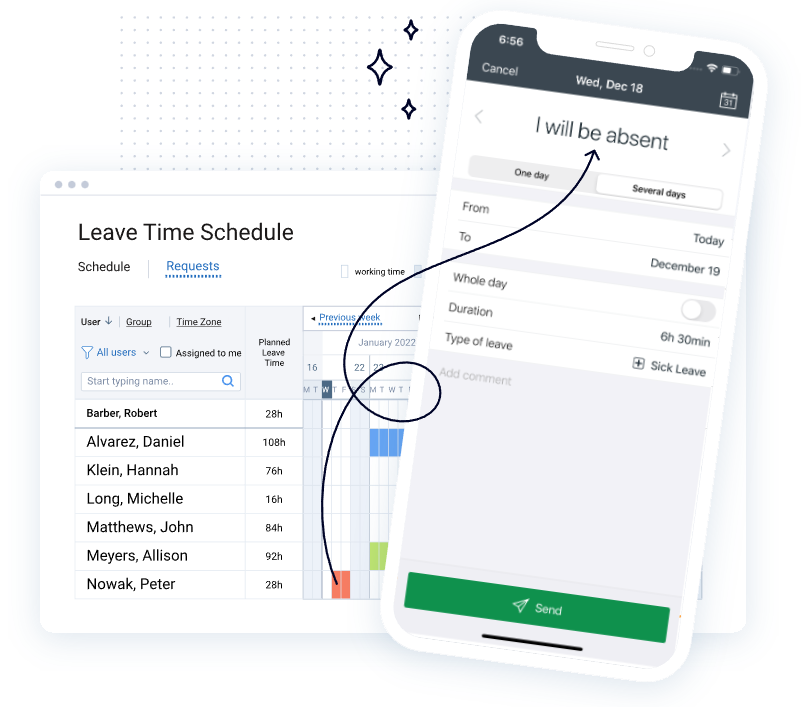
With actiPLANS Mobile, your employees can submit leave requests on the go and promptly inform colleagues about last-minute absences and tardiness
4. Ineffective communication
Shift scheduling involves a lot of moving parts. Managers are responsible for juggling everyone’s availability, time off requests, and any changes to the schedule that may arise.
When communication breaks down, it can be difficult to keep track of it all. Managers may accidentally double-book employees or overlook a time off request, causing frustration and confusion for everyone involved.
But it’s not just managers who are affected by poor communication. Employees also need to be kept in the loop when it comes to scheduling. If a last-minute change is made to the schedule and an employee isn’t notified promptly, it can throw off their entire day – now, that’s what we call frustrating!
Solution:
Step 1: Set clear expectations
Effective communication starts with expectations. So, make sure everyone – from managers to employees – understands what is expected of them in the scheduling process. Clearly define the roles and responsibilities of each team member to avoid confusion and miscommunication.
Step 2: Follow a protocol
Create a communication protocol that outlines how and when to share scheduling information. It should define the tools and channels used to share information, as well as the timeframe for responding to messages.
Step 3: Promote collaboration
Encourage employees involved in the shift scheduling process to work collaboratively. This way, everyone can provide feedback on the schedule and feel heard. Collaboration also helps to avoid scheduling conflicts and makes it easy to adjust the schedule when necessary.

actiPLANS has a built-in notification system that informs employees of the latest schedule updates automatically and saves time on communication
5. Long-term absences
A long-term absence of an experienced and reliable employee can lead to a whole host of problems, from understaffing to increased stress levels.
For starters, it’s not always easy to find a replacement for someone who has been with the company for a long time. These seasoned workers often possess skills and knowledge that simply can’t be replaced overnight.
Additionally, long-term employee absences can have a ripple effect on the rest of the team. Co-workers may have to pick up the slack and work overtime, which can lead to burnout and decreased productivity. And let’s not forget about the impact on customer service – a shortage of experienced employees can mean longer wait times and a decrease in overall satisfaction.
Solution:
Step 1: Use a reliable leave tracking system
An automated leave tracking software is all you need to keep a close eye on employee absences, both planned and unplanned, and collect data for more informed decision-making in shift planning and resource allocation.
Aside from that, a reliable system helps employees to know exactly how many days off they’ve accrued and when it’s okay to take them. Plus, it saves you time and hassle when it comes to calculating time off accrual rates and handling leave request approvals.
Step 2: Consider cross-training employees
This not only gives your team members new skills and knowledge but also ensures that someone can step in and keep the business running smoothly when one of your star players suddenly calls in sick or takes a well-deserved vacation.
Step 3: Stay in contact with absentees
Keep in touch with employees who are on long-term leave to obtain updates on their expected return dates. This information is vital for keeping your scheduling up-to-date, avoiding over- or under-staffed shifts, and ensuring that employees returning from leave are adequately reintegrated into your organization.
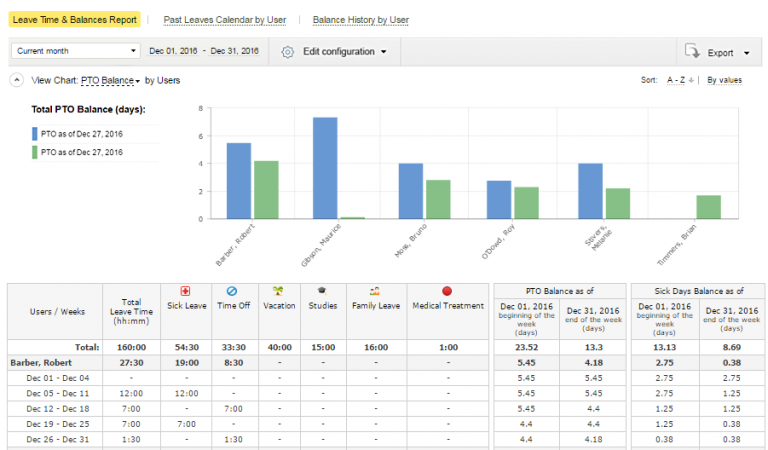
Thanks to automation, employee self-scheduling functionality, and insightful reports, actiPLANS simplifies leave management and provides a wealth of data to keep staff absences in check
6. Systematic understaffing
Understaffing is the new normal in today’s world, where many businesses are cutting staff to decrease expenses. However, it seems that the impact of these cuts is often felt very keenly in the operations department, and not in a good way.
When the staff numbers are always low, fewer people are available to work the scheduled shifts. This means that should someone become sick or unavailable for another reason, there may not be enough people available to fill the gap.
Furthermore, understaffing can lead to burnout and decreased morale among employees, which in turn can lead to even more drastic staff shortages. This vicious cycle seems only to increase the problem, making it increasingly difficult to ensure that there are enough people available to work the shifts.
Solution:
Step 1: Identify the root cause of the problem
It’s imperative to understand what caused your understaffing in the first place:
- Do you find it hard to attract and retain employees due to low salaries and an ineffective benefits program?
- Do employees leave due to poor work culture and interpersonal conflicts in the workplace?
A comprehensive understanding of underlying causes will help to address the issue effectively and avoid understaffing in the future.
Step 2: Balance workloads
It’s pivotal to ensure that workloads are distributed evenly across all employees. That means taking a close look at the job duties and functions and making sure that no person is overburdened while others have little to do.
Implement a project management tool to monitor the workload balance over time and stay in the know of the ongoing performance progress.
Step 3: Try flexible work arrangements
Offering employees an option to work from home, part-time, or with job-sharing options can help alleviate the burden of understaffing. It may not only improve employees’ work-life balance but also enable your business to attract top talent from a wider range of candidates who might not have been able to commit to a traditional nine-to-five schedule.
Step 4: Focus on increasing employee engagement
Employers must listen to their employees and make them feel valued and heard. Improving employee morale through rewards and recognition programs, training and development opportunities, and fostering an overall positive workplace culture can boost productivity while retaining employees.
7. Overscheduling
Unless you’re running a ghost town, chances are high that certain shifts will be more in demand than others. And when that’s the case, it’s easy to fall into the trap of scheduling too many employees during these periods, thinking that more hands on deck means faster service and happier customers.
However, the reality is that overscheduling can actually backfire and lead to longer wait times, decreased morale, and higher costs.
Secondly, there’s the problem of unforeseen circumstances.
Let’s say you have an upcoming shift where you’ve scheduled a large number of employees to cover all the bases. Suddenly, half of your staff calls in sick or has an emergency, leaving you with a skeleton crew. This is where overscheduling can come back to bite you, as you’ll be paying for employees who aren’t able to work while scrambling to find replacements on short notice.
Solution:
Step 1: Revisit your scheduling practices
Take a look at your scheduling policies and practices and see if there are any changes you can make to avoid overscheduling in the first place. Perhaps you need to set stricter guidelines about how much overtime employees can work, or maybe you need to invest in better scheduling tools to help you manage workloads more effectively.
Step 2: Identify and analyze performance patterns
To deal with the problem, we first must identify patterns in employee performance data. This means taking a close look at things like how many tasks an employee is completing in a day, how long those tasks are taking, and how often they are taking breaks.
By analyzing these patterns over time, we can start to see which employees are taking on too much or too little work, make appropriate changes to their schedules, and inform your decisions on how many employees to hire, when to ramp up staffing levels, and whether or not we need to adjust existing workloads.
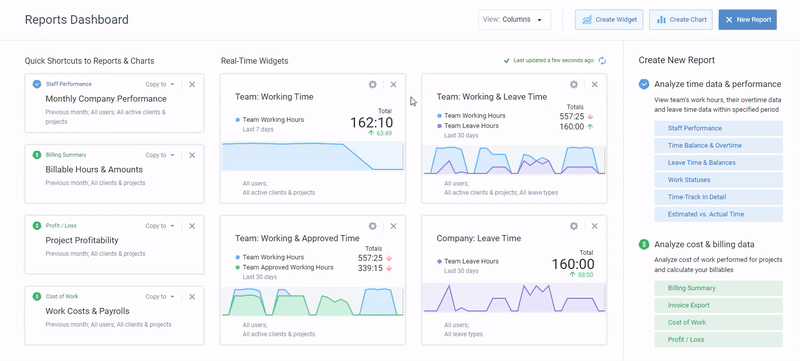
actiTIME allows you to stay in control of employee workloads and collect highly accurate performance data for more informed decision-making
8. Unfair scheduling
Unfair scheduling is like a slap in the face for employees. But besides affecting your team members’ personal lives in a negative way, an unfair scheduling process harms your business operations too:
- When treated unfairly, employees are likely to report sick more frequently, thus affecting production timelines and service delivery quality.
- Unfair scheduling practices increase employee dissatisfaction and disengagement, which can result in a high turnover rate, leading to high recruitment and training costs.
So, what can you do about that?
Solution:
Step 1: Set out the rules
Clear rules on how to assign shifts will help you avoid confusion and frustration among employees.
When making up those rules, consider how employee seniority, skills and expertise, job duties, and availability may affect your shift scheduling decisions. Additionally, avoid assigning the toughest or least-desirable shifts to workers who already have the most challenging tasks. Instead, share the burden equally, rotating the less desirable shifts around.
Step 2: Consider employee preferences
Take employee preferences into account when creating the schedule. Find out if someone prefers to work certain days or times, and try to accommodate their request if possible. This will not only improve employee morale but also help to boost productivity as employees are more likely to be satisfied with how they work.
Step 3: Utilize technology
Employers can use software that allows employees to easily input their preferences and availability or even tools that automatically create schedules based on employee data. This will save you time while also ensuring a fairer distribution of shifts.

Whether it’s time off time or working time, your employees can easily schedule it in actiPLANS on their own, leaving you with the only task to review and approve the created schedule
9. Uncontrolled overtime
Overtime happens when employees work beyond their regular hours, either due to increased demand or unexpected workload. Sure, it may seem like a quick solution to meet deadlines, but if not closely monitored, it can wreak havoc on shift schedules and eventually lead to disastrous consequences:
- Uncontrolled overtime leads to employee exhaustion and burnout. When workers are working extended hours regularly, they can become physically and emotionally drained, leading to decreased productivity, poor performance, and, worst of all, workplace accidents.
- Uncontrolled overtime can throw a wrench into shift scheduling plans. When employees work extra hours, the workload gets unevenly distributed, and it becomes challenging to maintain a balance between work and personal life. This can lead to low employee morale and increased turnover rates.
- Uncontrolled overtime can be a massive expense for organizations, from overtime pay to increased healthcare costs due to employee exhaustion and accidents. Monitoring overtime hours and effectively distributing the workload is essential to avoid unnecessary expenses.
Solution:
Step 1: Analyze the situation
Start by reviewing your company’s current situation with overtime:
- Are there any patterns that emerge?
- Do certain departments have more overtime than others?
- Is there a lot of overtime on weekends?
- Are there employees who are consistently logging in overtime hours?
It’s worth reviewing employee schedules to determine if they are being overworked or if their workloads can be redistributed among other employees. It’s essential to ensure that each employee has a reasonable workload that can be completed within their allotted work hours.
Step 2: Analyze the root cause of overtime
It’s necessary to analyze the root cause of overtime so that you can identify and address the problem effectively.
For example, if production isn’t meeting its targets, it might result in workers adding overtime hours, which ultimately increases costs. The root cause could also be related to staffing – with too few employees leading to others working additional hours to compensate for the deficit.
Step 3: Provide appropriate training and tools
The lack of training can slow down employee performance and eventually make them work longer hours than expected. When employees understand how to manage their workload efficiently and have the right equipment and tools, they are better positioned to meet their performance expectations, reducing the need for overtime.
Step 4: Monitor progress
Keep track of how much overtime is being used and analyze the impact it has on your company’s bottom line. Identify areas where you can make improvements and continue to implement changes that help reduce overtime costs.
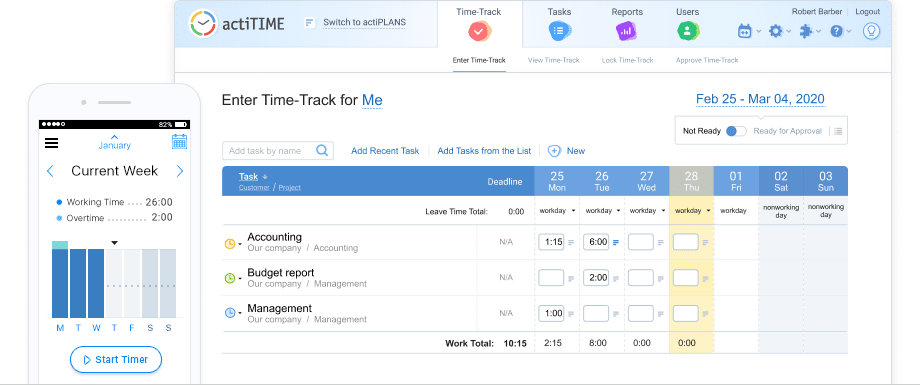
actiTIME allows for highly accurate time tracking and helps to stay in total control of overtime
10. Outdated shift-scheduling systems
Outdated shift scheduling systems are akin to the floppy disk or dial-up internet, archaic and obsolete relics of times gone by. Yet, somehow, they still linger on in certain work settings, causing undue stress and frustration for all parties involved.
- Outdated systems lack flexibility. With the rise of remote work and the gig economy, scheduling needs have become increasingly complex. Workers now have more varied and shifting schedules, and employers need to be able to adapt quickly to changing work demands. An inflexible system that doesn’t allow for last-minute changes or shift-swapping can lead to a loss of productivity and morale.
- Outdated systems can also be needlessly complicated and time-consuming. Think of the hours wasted by managers poring over Excel sheets or manually inputting data into ancient software. These clunky systems can also lead to errors and miscommunications, as information is not easily accessible to all parties involved.
Solution:
actiPLANS is the one-stop shop for all your scheduling needs. What sets it apart from the rest is the flexibility it offers.
Got a unique shift requirement that needs a custom solution? actiPLANS has you covered! With its flexible settings, you can create custom shift types and leave types that match your needs precisely.

We know that your time is valuable, which is why we made scheduling shifts and time off with actiPLANS an easy and intuitive process. Our visual timeline feature lets you create schedules that are convenient and easy to understand for everyone on the team.
On top of that, actiPLANS automates PTO accrual, leave request approval, and team communication regarding schedule changes – now you can focus on important work while actiPLANS takes care of the routine tasks.
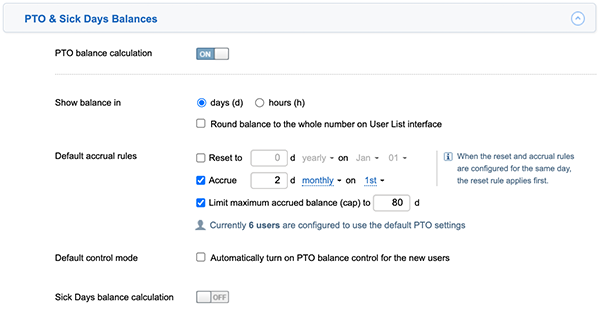
And finally, for those who love data-driven resource allocation and work scheduling, actiPLANS offers detailed reports and insightful analytics. It provides you with a wealth of data to make informed decisions and optimize resource management.
With all the above features and more, actiPLANS is the perfect scheduling solution for the modern workforce. Try it out for yourself to see why thousands of loyal users trust it to manage their shift scheduling needs.
Click here to sign up.




